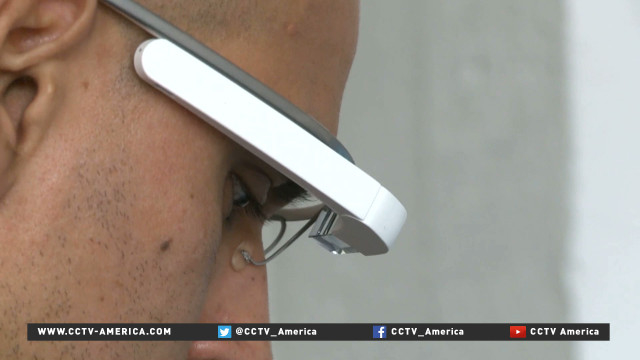Weak sales and bad press have forced the tech giant Google to go back to the drawing board with Google Glass. Even so, that doesn’t mean some enterprising professionals haven’t seen the business possibilities behind the glasses. CCTV America’s Mark Niu filed this report from San Francisco.

Google Glass failed for now but the technology still has hope
Weak sales and bad press have forced the tech giant Google to go back to the drawing board with Google Glass. Even so, that doesn't mean some enterprising professionals haven't seen the business possibilities behind the glasses. CCTV America's Mark Niu filed this report from San Francisco.TechCrunch writer Kyle Russell made headlines last year when he was on the street wearing Google Glass. Someone yelled “Glass,” pulled the device off his face, ran off and later smashed it.
“In the tech world we describe them as early adopters. It quickly got morphed into tech weirdos who wear cameras on their faces and are always watching you,” Russell explained. “I think because of that warping, people kind of got the wrong idea about what it was.”
Another Glass wearer had already been harassed at a bar, and soon bars actually put up signs banning Google Glass. Prior to his interview with CCTV America, Russell said he hadn’t worn Glass for months because of the stigma and because he didn’t find it useful.
“If Google Glass does come back though, I think it will be what the long term vision was originally supposed to be,” Russell said. “It will be a pair of fancy, nice stylish glasses that also happen to get notifications popping up just on the screen seamlessly.”
While Glass failed to hit the consumer market, many believe the market for professional purposes is more attainable. Augmedix is an app and service for Google Glass that automatically takes notes for doctors, allowing them to concentrate solely on their patient.
“Throughout the process patients are empowered to decide what they want. And over 99 percent of our patients decide they want to use Glass. And it’s because of the benefits,” Pelu Tran, Co-founder of Augmedix said. “The doctor can spend more time paying attention to you, they’re not distracted…they are able to spend their time with you less stressed out.”
Tran said Augmedix is being used in 37 clinics across America, and that it’s natural for technology to hit enterprise first and consumers second.
“You saw the smartphone first on your service person to look up inventory levels, you saw the tablet first on your Fedex delivery man, you didn’t see them on a teenager at the mall,” Tran said. “Smartphones and tablets, these are all things that started on enterprise first. It’s exactly what we are seeing with Google Glass.”
While Google’s CFO refered to a “pause and reset strategy” with Glass, the competition continued full speed ahead.
Osterhout Design Group (ODG) has taken the opposite approach of Google, staying relatively unknown as it worked on smart glasses for six years targeting specific sectors, such as government and the military industry. ODG plans to release a model for the consumer market.
ODG’s industrial glasses cost about $5,000. They’ll cut that to about $1,000 for the consumer grade, which is 30 percent smaller and 20 percent lighter. The optical system is also 80 percent see-through, and parts are removable and replaceable.
“At one end, we have our friends at Google who have a very tiny device, out of the way, more status device,” Nima Shams, Vice President of ODG said. “On the other hand we have our friends out Oculus, very immersive, gaming. But it requires a hefty computer. It’s not see through. ODG finds itself right in the middle of those two.”
It’s mobile yet as powerful as a hi-end tablet, featuring wifi, bluetooth and video that ODG said is equivalent to sitting 10-feet away from a 65-inch HD TV. Shams called it augmented reality because the wearer remains rooted in the real world as opposed to virtual reality.
The specs push the boundaries with the capability to make buildings pop up from this piece of paper, the idea being you could view how a design would look right at a potential site.
“I look at a bus sign and it tells me if the buses are delayed,” Shams said. “If I look at video or poster for a movie, it starts playing the poster. So it assists your reality.”
Research firm Gartner predicted that by 2018, more than 25 million head-mounted displays will have been sold.
Shara Tibken of CNET News discusses latest trends in tech
CCTV America’s Michelle Makori interviewed Shara Tibken on the latest trends in tech, who is the senior writer for CNET News.

 CGTN America
CGTN America

